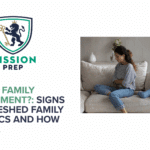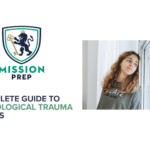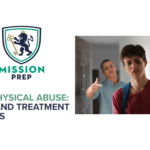Horticultural Therapy for Trauma in Teens

Up to 43% of boys and girls have at least one traumatic experience, equating to as many as 556 million young people. Each of these teens has a unique trauma experience, personality, and interests.
Given this complexity, trauma support must be personalized. While traditional therapy can be effective, it often relies on teens verbalizing their experiences, which some young people aren’t ready for.
Horticultural therapy for trauma offers something different. Through predictable rhythms, sensory engagement, and gentle physical activity, recovery-focused garden therapy creates space for emotional processing without pressure.
Growing evidence supports the use of nature-based therapies for trauma recovery. Research shows that gardening can significantly reduce stress and improve emotional regulation in trauma-affected populations.¹
This guide explores the following aspects of horticultural therapy for trauma:
- How trauma shows up in teens
- Trauma recovery through nature
- Horticultural therapy activities for trauma recovery
- How Mission Prep can help with recovery-focused garden therapy
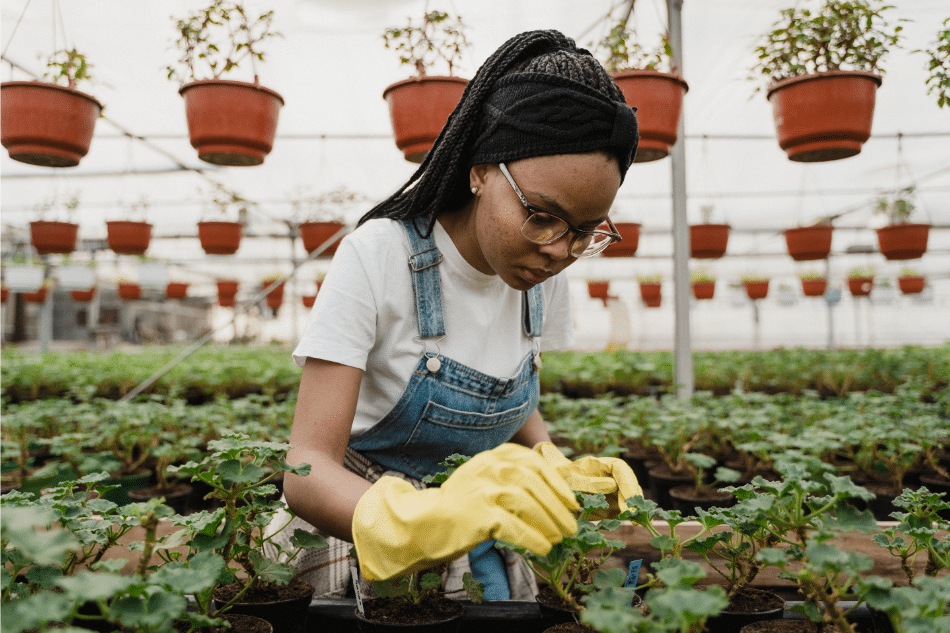
How Trauma Shows Up in Teens
Trauma can leave deep marks on the nervous system. Research shows that trauma exposure in childhood and adolescence can result in emotional and behavioral problems like:²
- Depression
- Anxiety
- Social problems
- PTSD
- Suicide attempts
Many teens struggle to explain what they’re feeling, especially when the trauma isn’t recent or clearly defined. Instead of talking about it, they often show it through patterns of behavior that reflect an internal sense of threat or disconnection.
Some teens shut down while others may become reactive or start showing unpredictable behavior. Others still may appear emotionally flat or detached but are, in reality, working hard just to stay regulated in social settings. They may avoid eye contact, zone out during conversation, or seem distant even in familiar environments.
Other signs of teens with trauma are:
- Withdrawing from friends, family, or former interests³
- Becoming hyper-independent or emotionally distant⁴
- Reacting strongly to minor stress or perceived criticism⁵
- Feeling persistently exhausted or struggling with sleep⁶
- Having trouble concentrating, even on things they enjoy⁷
- Striving for perfection as a way to feel in control⁸
Trauma-informed horticultural care recognizes these signs for what they are – protective responses to overwhelm. In that context, creating safe outdoor spaces for healing can become a key part of helping the nervous system settle enough to begin processing what happened.
Benefits of Trauma Recovery Through Nature
When the brain experiences trauma, it shifts from processing the world through curiosity and connection to prioritizing survival. The amygdala – the part of our brain which processes intense emotions like fear and aggression – becomes overactive. The prefrontal cortex, which is responsible for reflection, decision-making, and impulse control, can be negatively impacted. And the hippocampus, which is involved in memory, can shrink. For teens who have experienced this, even minor stressors can feel overwhelming.
Fortunately, trauma recovery through nature can counteract these brain changes. Let’s explore some of the benefits of horticultural therapy for teens with trauma:
1. Calms the Nervous System
Horticultural therapy supports this recovery through sensory-rich, body-based engagement. Repetitive, hands-on garden tasks like digging, planting, or watering activate the somatosensory system and help regulate the vagus nerve, which plays a central role in calming the body after stress.⁹ Exposure to natural environments has been shown to reduce cortisol levels, lower heart rate variability, and increase dopamine and serotonin, which are the very chemicals that trauma often suppresses.¹⁰
2. Helps Teens Feel Safe
One of the biggest shifts happens when teens begin to feel safe in their own body again. Touching plants and tracking growth has been shown to help the brain reconnect to relational circuits that trauma shuts down.¹¹ This kind of nonverbal, trauma release through horticulture gives teens a way to heal and recover.
3. Improves Mood, Self-Esteem, and Mental Health
Studies show that when teenagers engage in gardening consistently, over a weekly basis, they notice positive changes to their self-esteem, mood, and their academic achievement.12 Research also shows that gardening can:
Reduce symptoms of depression, stress, and anxiety- Improve a person’s quality of life
- Increase a person’s life satisfaction
- Reduce feelings of anger and fatigue
4. Offers a Consistent, Predictable Environment
The sensory cues in a garden – sunlight flickering through leaves, the feel of damp soil, the steady sound of birdsong – offer teens an environment that feels consistent and grounded, which can help a teen feel safer and more secure. With time, they support the repair of disrupted sensory processing and encourage emotional responsiveness.
Why Routine, Rhythm, and Responsibility Matter in Trauma Recovery
Trauma interrupts the body’s sense of rhythm. It disrupts sleep, appetite, focus, and emotional regulation. After trauma, many teens live in a state of hyperarousal or emotional shutdown and unpredictability. In these instances, routine becomes essential to reintroduce consistency.
Repetitive, predictable routines can be a form of re-regulation for a teen’s developing nervous system. Daily garden tasks like watering, weeding, and checking on plants slowly help dial down the body’s threat response, offering a sense of stability that isn’t dependent on language or reasoning.
The responsibility of gardening also helps. A garden needs attention – plants wilt, shift, or thrive based on small daily choices, and teens begin to notice that their presence and what they do make an impact.
Many teens who’ve been through emotional or physical trauma struggle to trust their own instincts. They often feel helpless or hyper-responsible. A garden provides a space where they can show up, make decisions, and practice care in ways that feel safe. In gardening to process trauma, they’re not being asked to fix anything monumental.
Responsibility also invites agency. One of the hardest parts of trauma is the feeling of powerlessness. When a teen decides when to plant, what to trim, or how to organize their garden bed, they’re gaining autonomy. And because nature isn’t instant, these moments help teens tolerate uncertainty without spiraling into anxiety.
Horticultural Therapy Activities for Trauma Recovery
Horticultural therapists recognize that every teenager is different, and so are their trauma experiences. So, horticultural therapy offers a variety of activities to suit each teen’s needs and interests.
Here are some ways gardening helps process trauma intentionally through trauma-informed care:
- Planting from seed: Planting and nurturing seeds gives teens a concrete experience of beginnings and growth. The slow, visible transformation offers a mirror for internal change.
- Weeding or pruning: Pruning plants and weeding garden beds and pots encourages decision-making and discernment. Teens learn what to remove, what to keep, and how to monitor growth.
- Creating habitat or pollinator spaces: Creating these spaces provides connection to a larger system and reminds teens they are part of something beyond the self.
- Building or tending raised beds: Creating the beds and growing spaces offers a sense of containment and boundary, especially helpful for teens who feel emotionally scattered or ungrounded.
- Watering and preparing the soil: Tasks like watering or soil preparation help integrate sensory information, supporting brain function and emotional regulation.
Plant care as trauma therapy is powerful because it invites relational practice without social pressure. Teens can tend to their own small garden space or choose to get involved in group gardening activities with peers. They will learn that a wilted plant doesn’t judge or reject; it simply reflects what it needs.
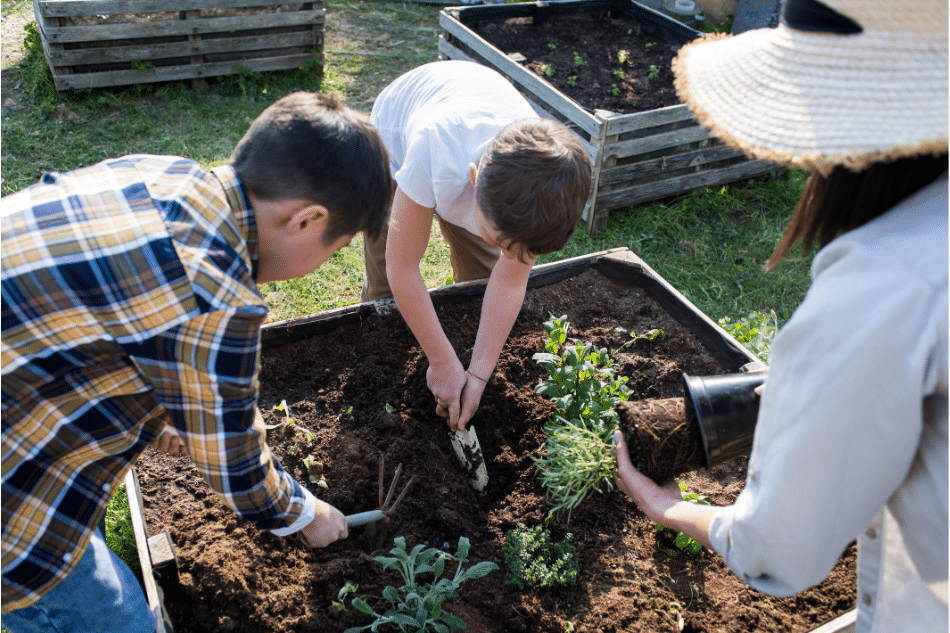
Reach Out to Mission Prep for More Information on Recovery-Focused Garden Therapy
Every teen processes trauma differently. Some need time and space while others need to talk it out. Generally, teens need to open up in their own time, and often require therapy that provides a sense of safety and doesn’t demand too much of them before they’re ready. That’s why recovery-focused garden therapy can be such a powerful option. It offers safety, security, and predictability, without having to put their experiences into words.
Whether you’re a parent, caregiver, or professional working with youth, incorporating garden-based practices into a healing plan can open new doors. Nature support for trauma teens focuses on rebuilding what trauma disrupted through regulating the nervous system, building inner safety, and driving connection.
We’ve seen firsthand how teens begin reconnecting after trauma with nature. If you’re looking for ways to support a teen through that kind of healing, our team is here to help guide the process. Reach out to Mission Prep to discuss treatment options for teen trauma today.
References
- Lentoor, A. G. (2024). Effect of gardening physical activity on neuroplasticity and cognitive function. Exploration of Neuroprotective Therapy, 4, 251–272. https://www.explorationpub.com/Journals/ent/Article/100481
- Darnell, D., Flaster, A., Hendricks, K., Kerbrat, A., & Comtois, K. A. (2019). Adolescent clinical populations and associations between trauma and behavioral and emotional problems. Psychological Trauma: Theory, Research, Practice and Policy, 11(3), 266–273. https://pmc.ncbi.nlm.nih.gov/articles/PMC6215522/
- Malagón-Amor, Á., Martín-López, L. M., Córcoles, D., González, A., Bellsolà, M., Teo, A. R., Bulbena, A., Pérez, V., & Bergé, D. (2020). Family features of social withdrawal syndrome (hikikomori). Frontiers in Psychiatry, 11, 138. https://pmc.ncbi.nlm.nih.gov/articles/PMC7061609/
- Askaree, D. L., Safdar, K., Fraooqui, J., Umar, H., Panhwar, R. J., & Baloch, L. K. (2025). Investigating the relationship between childhood trauma and hyper-independence among university students: From adversity to self-reliance. Research Journal of Psychology , 3(2), 290–307. https://www.researchgate.net/publication/391549439_Investigating_the_Relationship_between_Childhood_Trauma_and_Hyper-Independence_among_University_Students_From_Adversity_to_Self-Reliance
- Gao, S., Assink, M., Bi, C., & Chan, K. L. (2024). Child maltreatment as a risk factor for rejection sensitivity: A three-level meta-analytic review. Trauma, Violence & Abuse, 25(1), 680–690. https://journals.sagepub.com/doi/10.1177/15248380231162979?icid=int.sj-abstract.citing-articles.4
- Center for Substance Abuse Treatment (US). (2014). Understanding the impact of trauma. Substance Abuse and Mental Health Services Administration. https://www.ncbi.nlm.nih.gov/books/NBK207191/
- Matte-Landry, A., Grisé Bolduc, M.-È., Tanguay-Garneau, L., Collin-Vézina, D., & Ouellet-Morin, I. (2023). Cognitive outcomes of children with complex trauma: A systematic review and meta-analyses of longitudinal studies. Trauma, Violence & Abuse, 24(4), 2743–2757. https://pmc.ncbi.nlm.nih.gov/articles/PMC10486170
- Alpheis, S., Altenmüller, E., & Scholz, D. S. (2022). Influence of Adverse Childhood Experiences and perfectionism on musician’s dystonia: A case control study. Tremor and Other Hyperkinetic Movements (New York, N.Y.), 12(1), 8. https://tremorjournal.org/articles/10.5334/tohm.687
- Franco, L. S., Shanahan, D. F., & Fuller, R. A. (2017). A review of the benefits of nature experiences: More than meets the eye. International Journal of Environmental Research and Public Health, 14(8). https://pmc.ncbi.nlm.nih.gov/articles/PMC5580568/
- (N.d.). Scholasticahq.com. Retrieved July 21, 2025, from https://jth.scholasticahq.com/article/115763.pdf https://jth.scholasticahq.com/article/115763.pdf
- Koga, K., & Iwasaki, Y. (2013). Psychological and physiological effect in humans of touching plant foliage – using the semantic differential method and cerebral activity as indicators. Journal of Physiological Anthropology, 32(1), 7. https://pmc.ncbi.nlm.nih.gov/articles/PMC3660240/
- Hoffman, A. J., Thompson, D., & Cruz, A. (2004). Gardening, self-efficacy and self-esteem. The Community College Enterprise, 10(1), 91.


